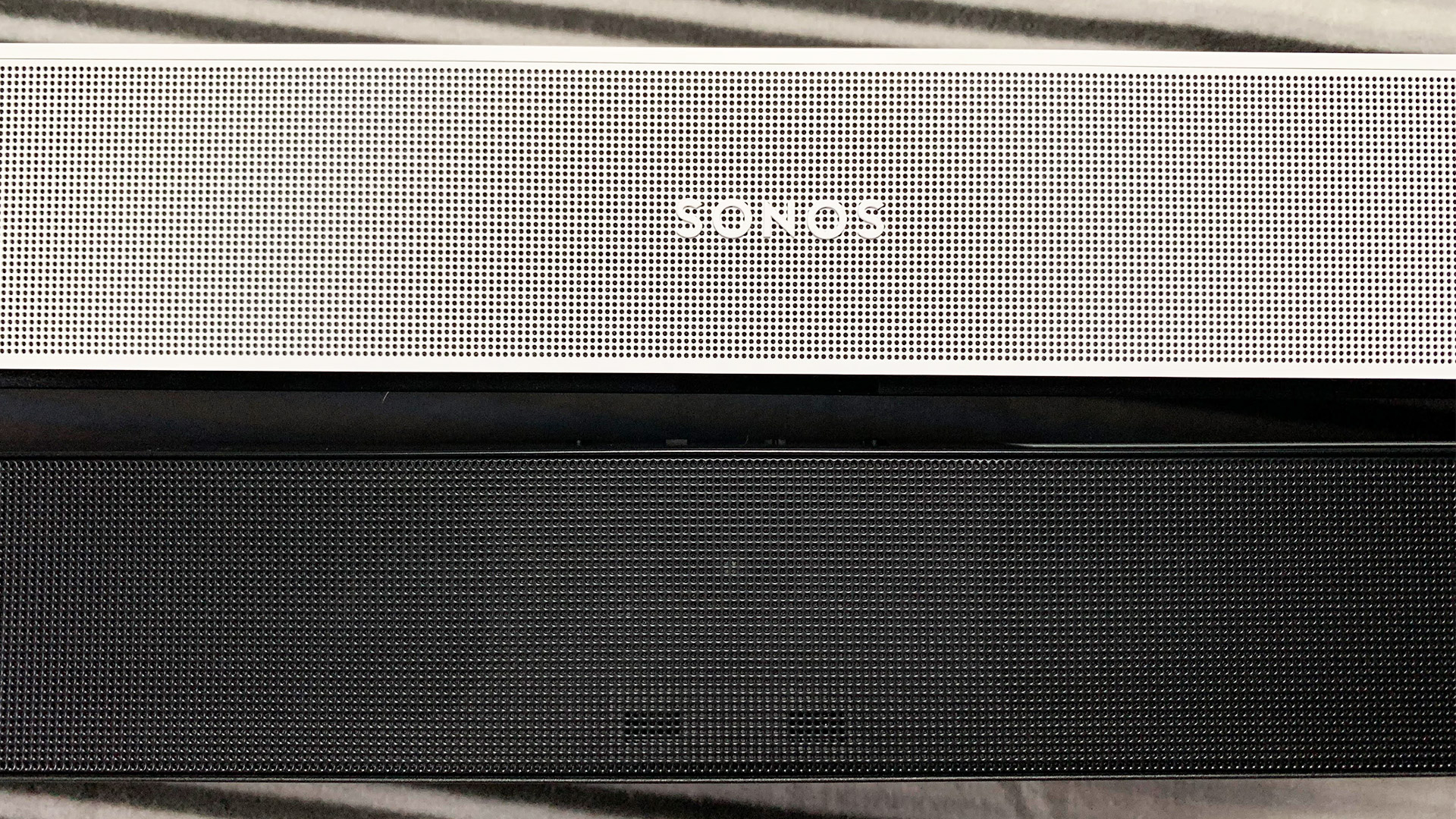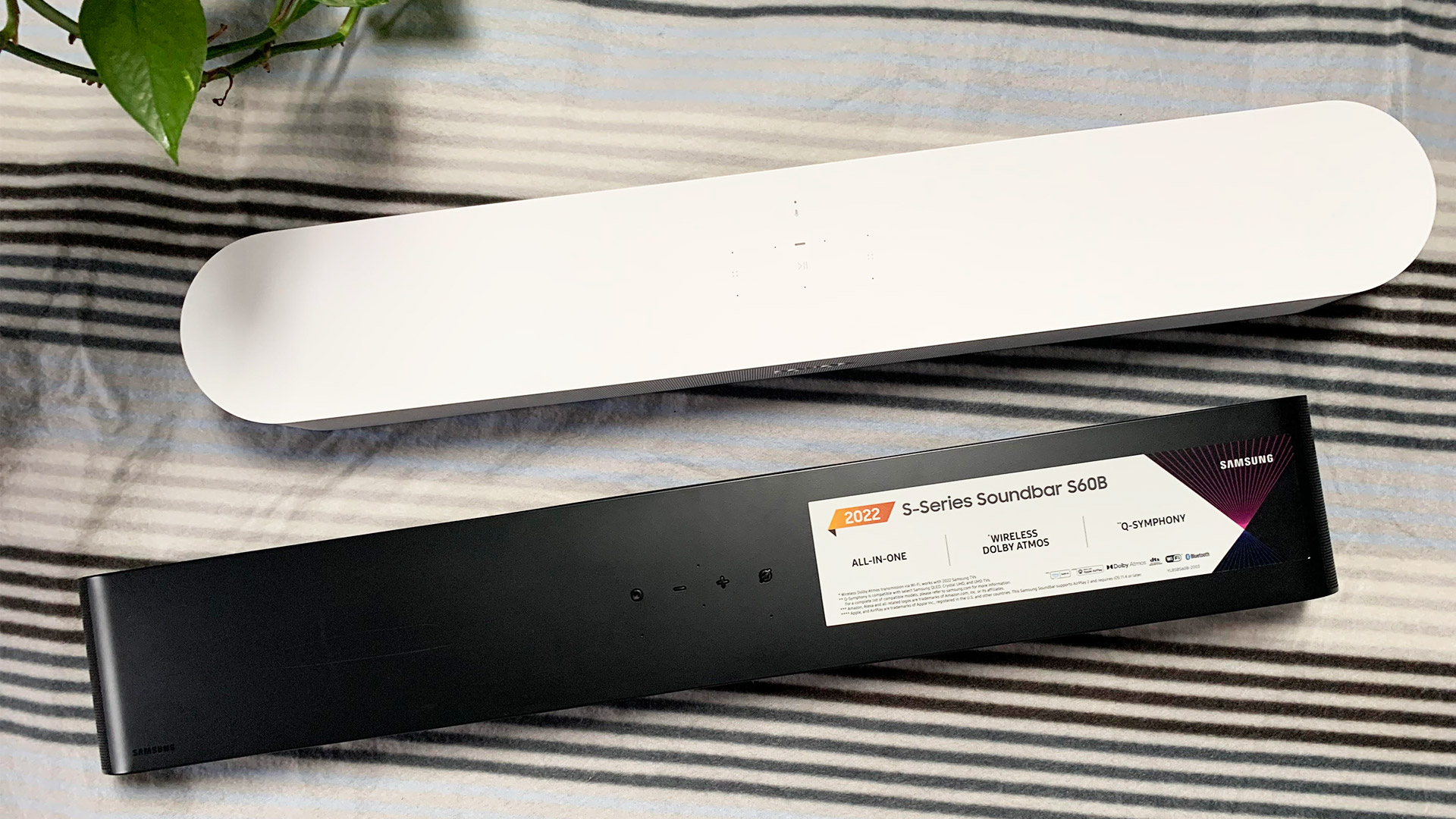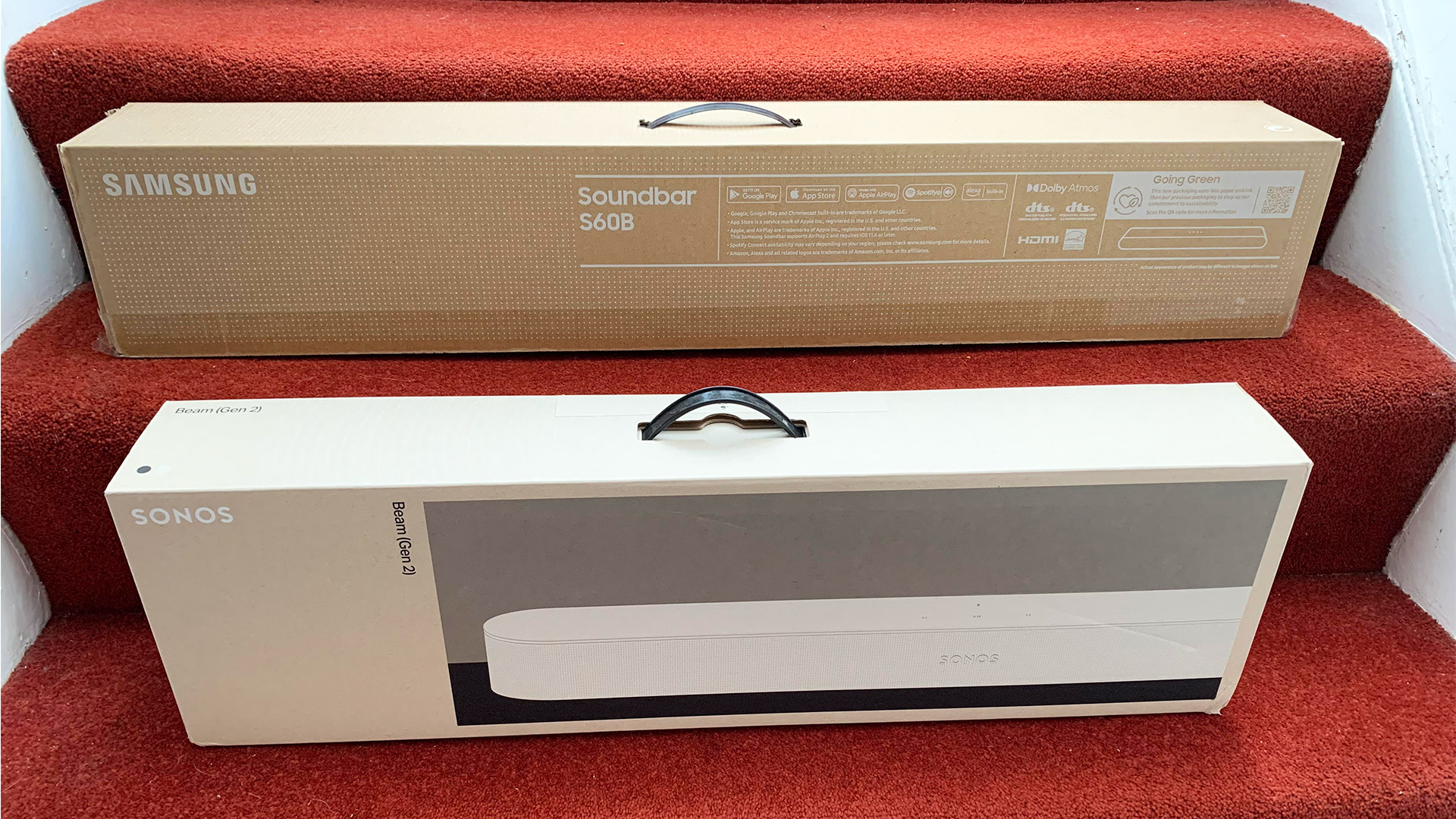I tried Sonos and Samsung's compact Dolby Atmos soundbars and if you want big sound, Sonos is king
In a head-to-head, the Beam holds up

I’ve recently transformed my living space into a soundbar testing studio and if you’ve been wondering where that racket has been coming from in North London, I’m sorry. You might have recently caught my Samsung HW-S60B review, but during that time I also had the Sonos Beam (Gen 2), so I could compare it against its biggest rival.
Let’s start with the similarities. Both soundbars are pitched as part of either company’s lifestyle range, which means they’re designed to work on their own and don’t need extra speakers or subwoofers to create big spatial audio. They’re marketed as an all-in-one solution, giving your TV’s audio the boost it needs – and they really do. Compared to what most of the best TVs can produce, the best soundbars deliver sounds that's so much bigger, richer and deeper, as is the case even with these smaller options.
Both the Beam (Gen 2) and HW-S60B support virtual Dolby Atmos and DTS:X surround sound, but lack built-in up-firing speakers, rear speakers and a subwoofer. They both have slim profiles, similar features, come with dedicated control apps, and similar control options on the soundbars themselves. Aside from their official pricing, which is also generally same at $499 / £449 (there is a slight AU$100 difference in Australia), this is where the similarities end.
Easy setup but attention to detail differs

The packaging is the first thing you’ll notice when it comes to un-boxing the Sonos Beam (Gen 2) and Samsung HW-260B side-by-side. Sonos has gone to lengths to use recyclable cardboard throughout, building it up to make it strong and durable too. It’s an extra touch and in stark contrast to the plastic air tubes used to protect the HW-S60B.
Next up is what you get in either box. Forgetting the soundbars themselves for now, the Beam (Gen 2) comes with a power cable, HDMI and manual, allowing you to instantly connect it to your TV. The HW-S60B doesn't come with a HDMI cable, it also doesn’t come with a HDMI eARC port – just a regular HDMI ARC, meaning it doesn't take uncompressed audio from the best 4K Blu-ray players. However, it does have wireless capabilities with compatible Samsung TVs, so it can connect with no cable at all, potentially. The HW-S60B also comes with an added sleek remote and wall brackets. The Sonos has neither, though it does have an Ethernet port.
When it came to setting up both Beam (Gen 2) and HW-S60B, both soundbars were incredibly straightforward to control via dedicated apps – SmartThings for Samsung and, uh, Sonos for Sonos. There’s a lot of crossovers in features too, with specialized room tuning to calibrate your soundbar to its surroundings for the spatial audio and quick access to loads of audio tuning settings, including bass, treble and equalizer, as well as sound modes.
Looking at the two soundbars, the Beam (Gen 2) is 19mm shorter in length but 6.6mm taller than the HW-S60B. They both roughly take up the same amount of space and in my opinion look similarly appealing in design, coming in white and black color options. But I’d say that Beam just inches it in overall appeal for the small LED backlit buttons on the top of it, which unlike the HW-S60B don’t protrude from the top. And I think the Samsung's remote is unnecessary for most people.
Sign up for breaking news, reviews, opinion, top tech deals, and more.
Sonos beats Samsung in the battle for big sound

To give both soundbars as fair a chance as possible, I used the same connection methods while listening to music, watching movies, shows and while gaming. I also cycled through the different sound modes as I switched between streaming devices.
First, I connected to two iPhones over AirPlay and played music via Apple Music and Spotify. I then played Elton John’s Rocket Man repeatedly to the point where I think I need a bit of a break from the song (I might be switching up my reference tracks from here on), but also for the sake of listening to either soundbar just after the other.
I even did a blind listening test (special thanks to my partner for assisting with this sound experiment), where I asked him to switch between playing both soundbars without telling me which was on, and asking me to note which one I thought sounded better. It was always the Sonos Beam (Gen 2).
The soundstage was simply wider, more expansive. It has the dynamic range to achieve the tight shifts in instruments, melody and rhythm demanded by certain tracks, all while seemingly instantly ending the bass or taming the treble when needed.
The difference in audio performance is also evident when watching movies; the HW-S60B just sounds flatter. It's the same story as the music, the Sonos has more energy and range. But I will say that both deliver a big boost to vocal clarity, and while the HW-S60B can sound slightly strained, it does have a big loud room-filling sound.
Final verdict: Sonos Beam vs Samsung HW-S60B

There are lots of similarities to how Samsung and Sonos approach compact these soundbar,s but then there are quite a few small differences that start to really add up when you’re trying to make the best decision for which is best for you.
These are the exact same reasons why I’d pick the Sonos Beam (Gen 2) over the Samsung HW-S60B for my compact home theater setup. Of course, if I didn’t have a non-Samsung TV, I might be won over by the potential for the wireless connection that doesn't use up one of my HDMI ports, but if I were to recommend one over the other it would still be the Beam (Gen 2).
You can also find loads of cheap Sonos sales and deals, but it's often the first generation of the Beam that's discounted. In saying that though, the Beam (Gen 2) is older than the HW-S60B by a year so it will likely see bigger sales sooner due to its age. My suggestion? Go with the Beam (Gen 2) unless you own a Samsung TV. But even then, you might still want it.
You might also like

Amelia became the Senior Editor for Home Entertainment at TechRadar in the UK in April 2023. With a background of more than eight years in tech and finance publishing, she's now leading our coverage to bring you a fresh perspective on everything to do with TV and audio. When she's not tinkering with the latest gadgets and gizmos in the ever-evolving world of home entertainment, you’ll find her watching movies, taking pictures and travelling.